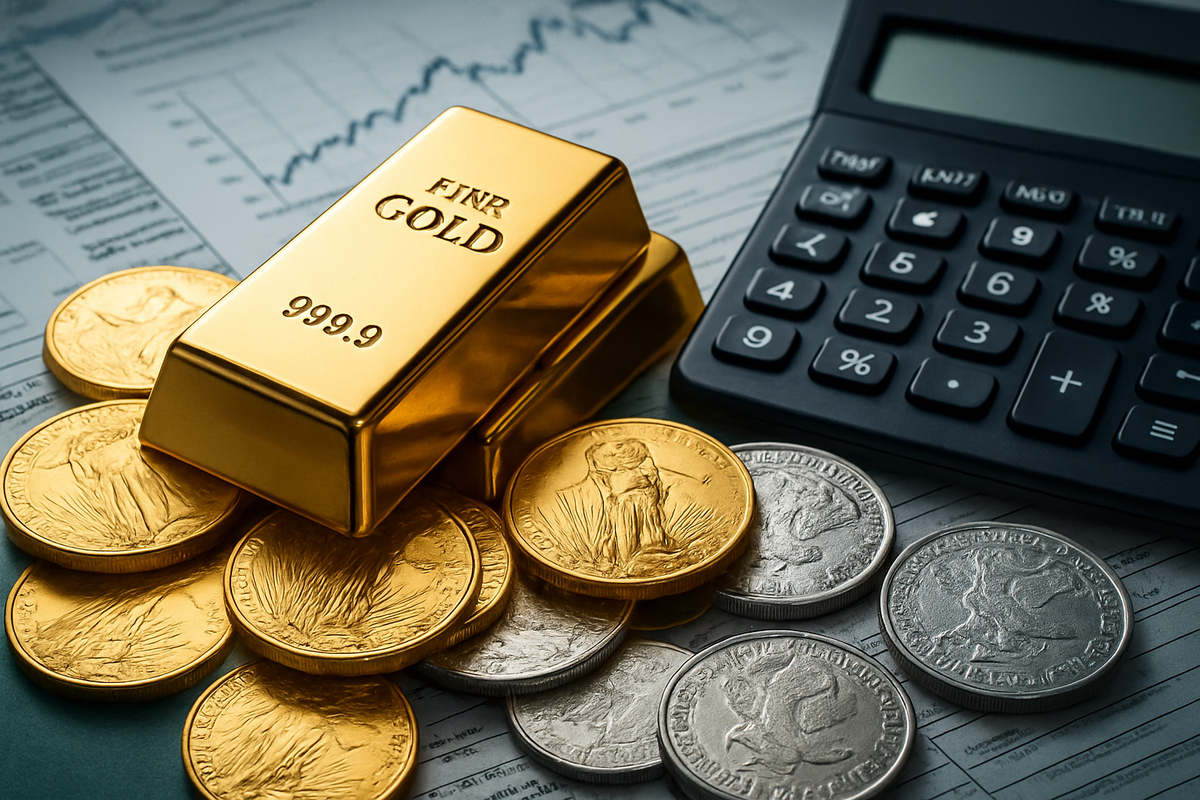
In the volatile landscape of financial markets, precious metals like gold and silver have long served as a beacon for investors seeking stability and a hedge against inflation. However, the allure of these tangible assets often overshadows a critical aspect of their investment lifecycle: the tax implications upon sale. As of late 2025, understanding the nuances of capital gains tax on physical gold and silver is paramount for MarketMinute readers, ensuring that profitable ventures don't lead to unexpected tax burdens. This guide will demystify the IRS's classification of precious metals and illuminate the path to tax-efficient investing in the glittering world of bullion.
Unpacking the Collectibles Conundrum: Short-Term vs. Long-Term Gains
The Internal Revenue Service (IRS) classifies physical gold and silver—including bullion, coins, and bars—as "collectibles" for tax purposes. This distinction is crucial, as it subjects long-term gains on these assets to a different, often higher, tax rate compared to other long-term capital assets like stocks and bonds. Investors must meticulously track their holding periods to differentiate between short-term and long-term gains, as the tax consequences vary significantly.
For assets held for one year or less, any profit realized from the sale of gold or silver is considered a short-term capital gain. These gains are taxed at an investor's ordinary income tax rate, which for 2025, can range from 10% to 37% depending on their taxable income and filing status. This means that a quick flip of precious metals could see your profits eroded by the same rates applied to your wages.
Conversely, profits from gold or silver held for more than one year fall under long-term capital gains. While most long-term capital gains on other assets enjoy preferential rates of 0%, 15%, or 20% for 2025, collectibles are subject to a maximum long-term capital gains tax rate of 28%. It's vital to note that this 28% is a ceiling; if an investor's ordinary income tax bracket is below 28%, their long-term collectible gains will be taxed at their lower ordinary income tax rate. For instance, an investor in the 12% ordinary income bracket would pay 12% on their long-term collectible gains, not 28%. Additionally, high-income earners may face an extra 3.8% Net Investment Income Tax (NIIT), pushing the effective long-term rate for collectibles to 31.8% for those exceeding certain Modified Adjusted Gross Income (MAGI) thresholds ($200,000 for single filers, $250,000 for married filing jointly). This dual-layered taxation underscores the importance of strategic planning.
The Investor's Playbook: Strategic Considerations for Precious Metals
Understanding these tax rules isn't merely an academic exercise; it's a critical component of a profitable investment strategy. For individual investors, the primary stakeholders, the objective is to maximize after-tax returns. This often means carefully considering the holding period of their precious metal assets. Holding gold or silver for more than a year can significantly reduce the tax burden for many, by moving gains out of the higher ordinary income tax brackets and into the potentially lower (or at least capped) long-term collectible rate.
While specific public companies are less directly impacted by individual investor tax implications on physical bullion, companies involved in the mining and distribution of precious metals—such as Barrick Gold (NYSE: GOLD) or Wheaton Precious Metals (NYSE: WPM)—benefit from a robust and knowledgeable investor base. A clearer understanding of tax rules can encourage more confident and sustained investment in the broader precious metals market. Dealers and custodians also play a role, as accurate record-keeping of purchase prices and associated fees (which contribute to the cost basis) is crucial for investors calculating their taxable gains. Initial market reactions to changes in tax policy or clarity on existing rules might not be immediate for physical metals, but a more informed investor base generally leads to a healthier, more predictable market.
Broader Implications and Historical Precedents
The distinct tax treatment of gold and silver as collectibles reflects a broader regulatory stance on tangible assets that are not considered productive capital in the same way as stocks or real estate. This classification has historical roots, with tax codes often distinguishing between assets held for investment income and those held for speculative or aesthetic value. The 28% maximum rate for collectibles has been a feature of tax law for many years, acting as a constant for investors in this space.
This framework influences how precious metals fit into a diversified portfolio. While gold and silver are often lauded for their diversification benefits and inflation-hedging capabilities, their tax treatment means investors must weigh these benefits against the potential for higher capital gains taxes compared to other asset classes. This can create ripple effects, potentially nudging some investors towards precious metal ETFs (Exchange Traded Funds) like SPDR Gold Shares (NYSEARCA: GLD) or iShares Silver Trust (NYSEARCA: SLV), which are typically taxed at the lower 15/20% long-term capital gains rates (assuming they are not structured as grantor trusts holding physical metal, which would then be subject to collectible rules). Regulatory discussions around simplifying capital gains tax or harmonizing rates across different asset classes could significantly alter this landscape, but as of 2025, the "collectibles" rule remains firmly in place.
The Road Ahead: What Comes Next for Precious Metal Investors
Looking forward, investors in gold and silver should anticipate continued scrutiny of tax policies, especially as government revenues fluctuate. While major overhauls to capital gains tax are not immediately on the horizon for late 2025, minor adjustments to income thresholds or specific asset classifications could always emerge in future legislative cycles. Strategic investors will need to remain agile, adapting their approaches to potential changes.
Short-term, the most actionable advice remains consistent: prioritize a holding period of over one year to qualify for the potentially lower long-term collectible capital gains rate. Beyond that, meticulous record-keeping of all purchase and sale details, including premiums, commissions, and storage costs, is paramount for accurately determining your cost basis and minimizing taxable gains. Exploring tax-loss harvesting opportunities, where capital losses can offset gains, should also be a regular part of an investor's year-end planning. Long-term, the market opportunities in precious metals will continue to be influenced by macroeconomic factors, geopolitical stability, and inflation expectations. Investors should continuously assess how their precious metal holdings align with their overall financial goals and risk tolerance, always with an eye on the evolving tax landscape.
Final Thoughts: Navigating the Tax Terrain for Golden Returns
The tax implications of selling gold and silver are a critical, yet often overlooked, component of precious metals investing. By understanding the IRS classification of these assets as collectibles and differentiating between short-term and long-term capital gains, investors can make more informed decisions that protect their profits. The 28% maximum long-term capital gains rate for collectibles, along with the potential for the 3.8% NIIT, highlights the importance of strategic holding periods and diligent record-keeping.
As the market moves forward, investors should remain vigilant for any potential shifts in tax policy, while continuing to leverage established strategies like holding for the long term and utilizing tax-loss harvesting. The enduring appeal of gold and silver as stores of value and hedges against uncertainty makes them a compelling part of many portfolios. However, true financial acumen in this space demands not just an understanding of market dynamics, but also a mastery of the tax terrain. What investors should watch for in coming months are any signals from policymakers regarding tax reform, and how global economic trends might influence the performance and, consequently, the taxable gains, of their precious metal holdings.
This content is intended for informational purposes only and is not financial advice






